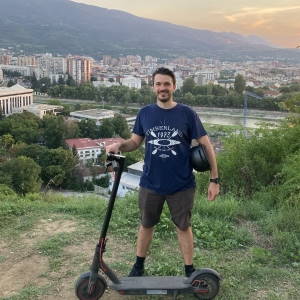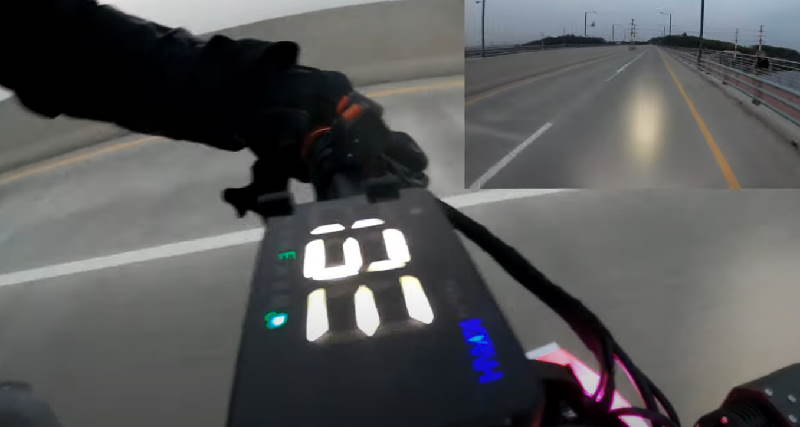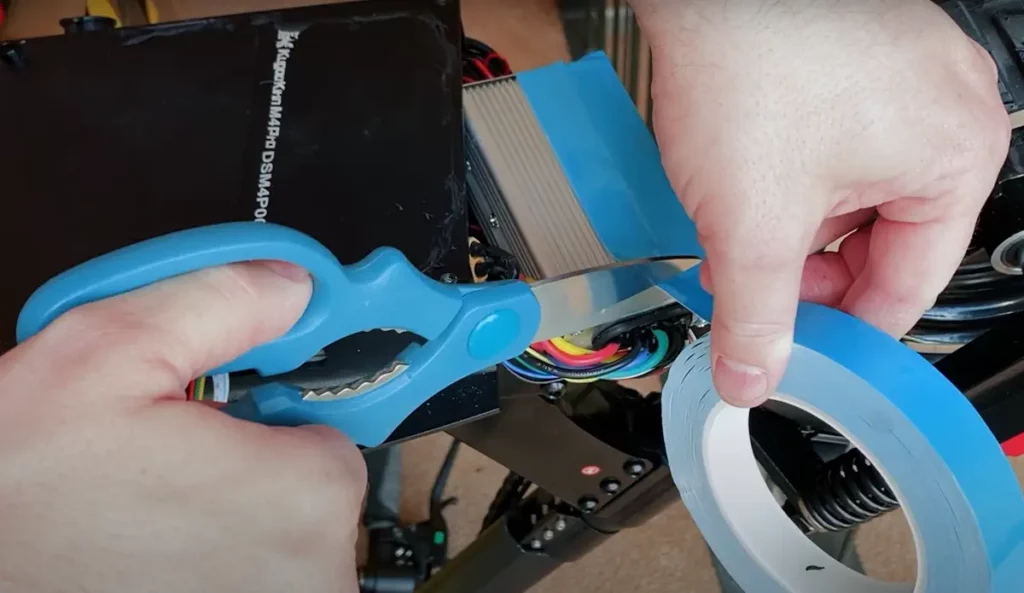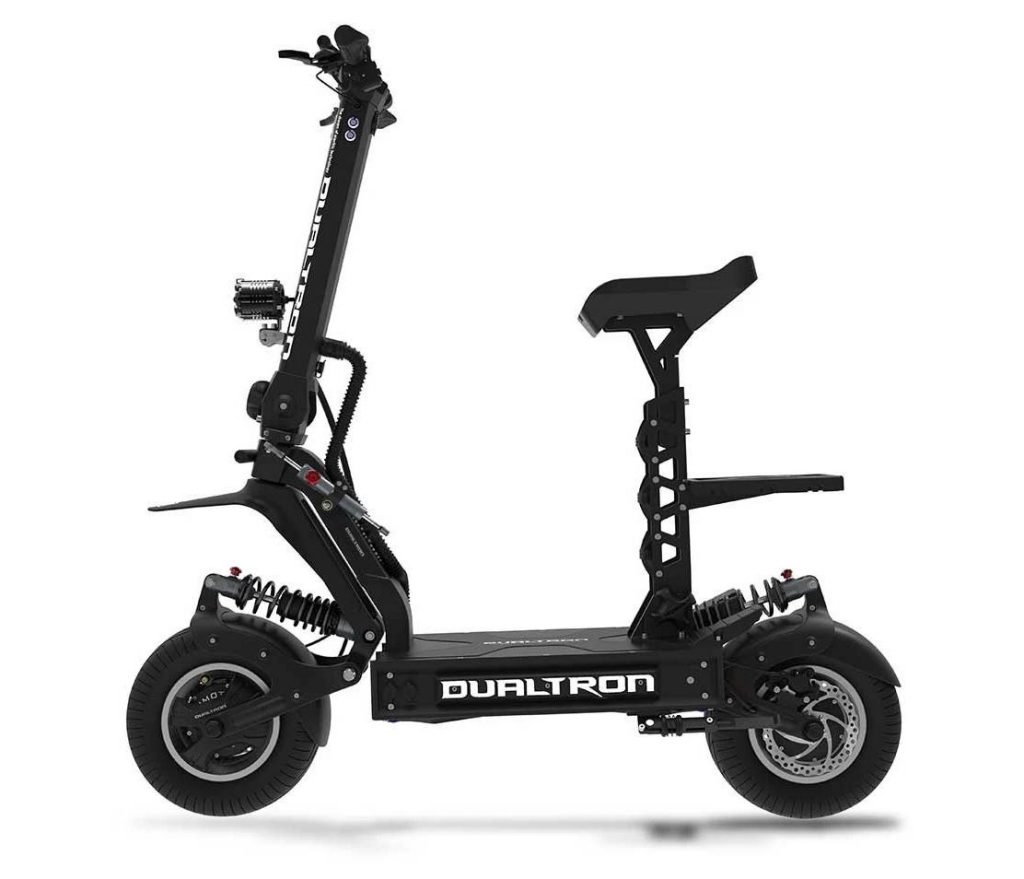Every electric scooter is unique and comes with a different set of features. This can leave you wondering what kind of features should you look for in your next scooter, and how can you make a clear distinction between the different parts of electric scooters.
In this article, we will go through all of the features you can see in e-scooters today, what are the different types of each feature, and how scooters with and without a specific feature compare to each other.
-
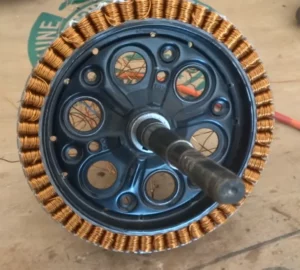 Performance featuresMotorBatteryControllerPerformance features, such as the motor, battery, controller, and folding mechanism, play pivotal roles in determining the speed, range, functionality, and portability of an electric scooter.
Performance featuresMotorBatteryControllerPerformance features, such as the motor, battery, controller, and folding mechanism, play pivotal roles in determining the speed, range, functionality, and portability of an electric scooter. -
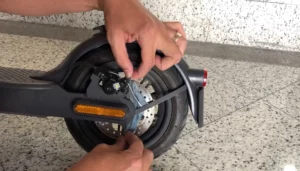 Comfort featuresWheelsTiresSuspensionThe design and quality of these elements contribute to the scooter’s ability to navigate various terrains comfortably, making them important considerations for users seeking a comfortable and enjoyable ride.
Comfort featuresWheelsTiresSuspensionThe design and quality of these elements contribute to the scooter’s ability to navigate various terrains comfortably, making them important considerations for users seeking a comfortable and enjoyable ride. -
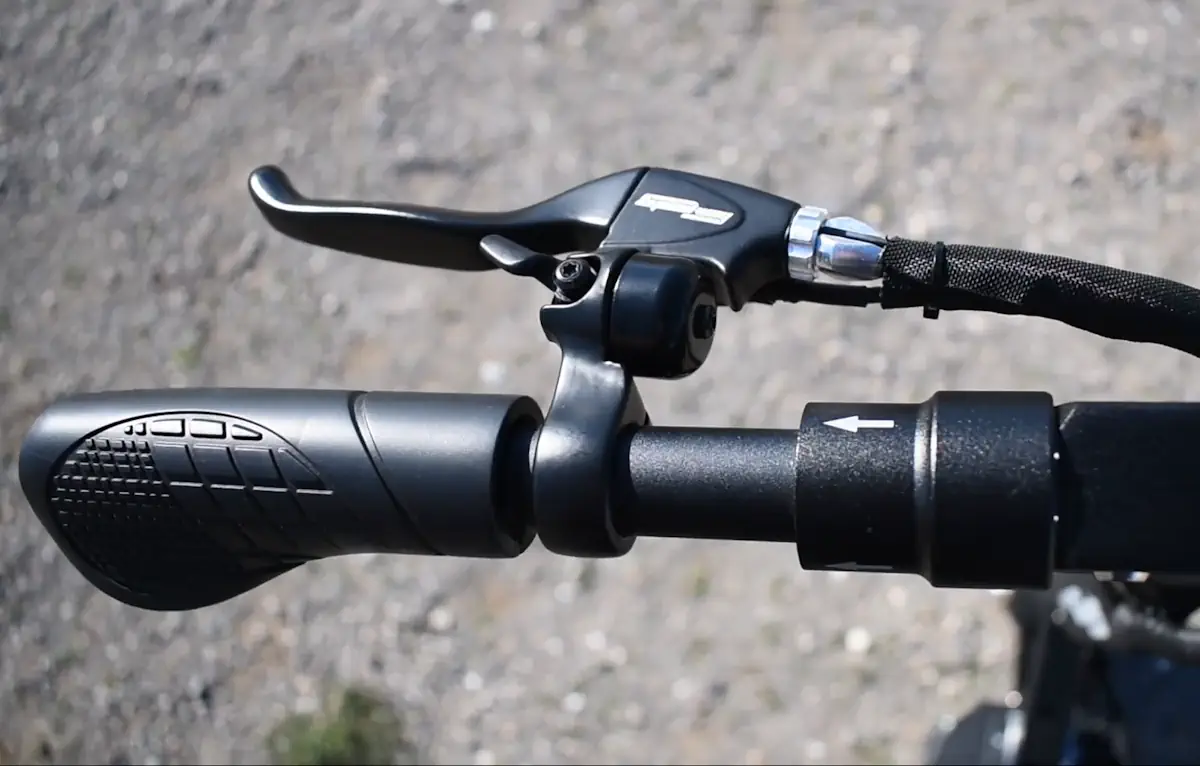 Safety featuresBrakesLightsKeysReliable brakes ensure effective control and stopping power, while well-designed lights enhance visibility, contributing to a safer riding experience. Additionally, robust key and lock systems add an extra layer of security for the scooter.
Safety featuresBrakesLightsKeysReliable brakes ensure effective control and stopping power, while well-designed lights enhance visibility, contributing to a safer riding experience. Additionally, robust key and lock systems add an extra layer of security for the scooter. -
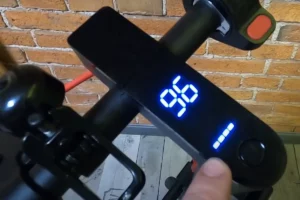 Convenience featuresScreenControlsFenderConvenience features enhance the overall user experience, including elements like a user-friendly screen, waterproofing to protect against the elements, easily accessible controls, and a functional fender to prevent splashes.
Convenience featuresScreenControlsFenderConvenience features enhance the overall user experience, including elements like a user-friendly screen, waterproofing to protect against the elements, easily accessible controls, and a functional fender to prevent splashes. -
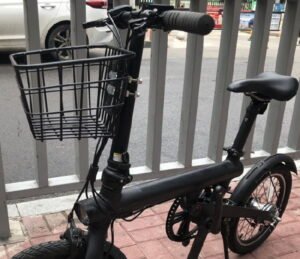 Extra features, accessories, customizations, upgradesBasketTrunkThis category includes options like a basket or trunk for storage, allowing riders to carry items conveniently.
Extra features, accessories, customizations, upgradesBasketTrunkThis category includes options like a basket or trunk for storage, allowing riders to carry items conveniently. -
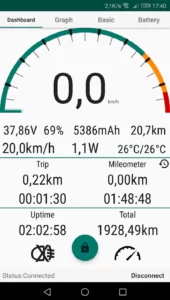 AppsiOSAndroidBluetoothMobile phone applications designed for specific scooter models or general-purpose apps can provide features such as real-time scooter tracking, battery status monitoring, and even anti-theft measures.
AppsiOSAndroidBluetoothMobile phone applications designed for specific scooter models or general-purpose apps can provide features such as real-time scooter tracking, battery status monitoring, and even anti-theft measures.
Performance features
The most important features of any scooter are the ones related to performance. These are present in every scooter model and are the key components you first want to look at when buying or repairing your scooter.
Motor
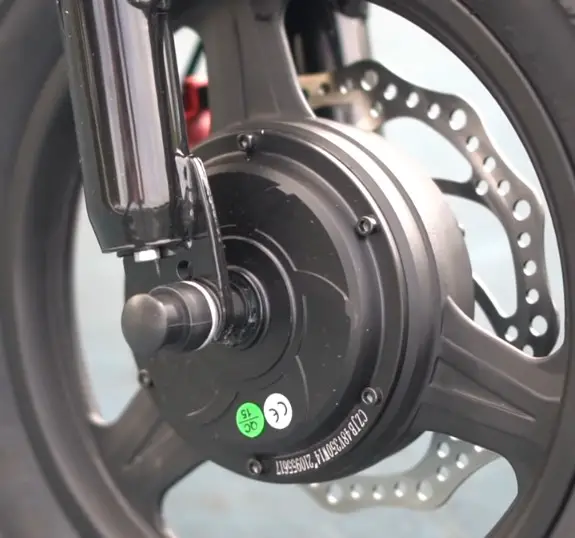
If you’re here for a quick answer on what type of motor your scooter should have, you will mostly want to look for a gearless brushless hub motor, preferably dual drive for more speed and power if that’s what you’re after.
By definition, every electric scooter has an electrically powered motor.
A scooter can have one or two motors in its build, which you’ll notice by the marks “single-wheel drive” or “dual drive” in the scooter’s advertising materials.
Based on the type, it can be a hub motor or a chain-drive motor.
A motor can also be geared, like in petrol scooters, or gearless, which is often the preferred method for electric scooters.
There is one more important distinction between different types of motors in electric scooters. Based on the electric technology they use, motors can be brushed or brushless.
The power of the motor is measured in Watts, and you will usually see two data points here – real and peak power.
If you want to know more about different types of motors in electric scooters and how they work, you can check my complete guide on electric scooter motors.
Speed
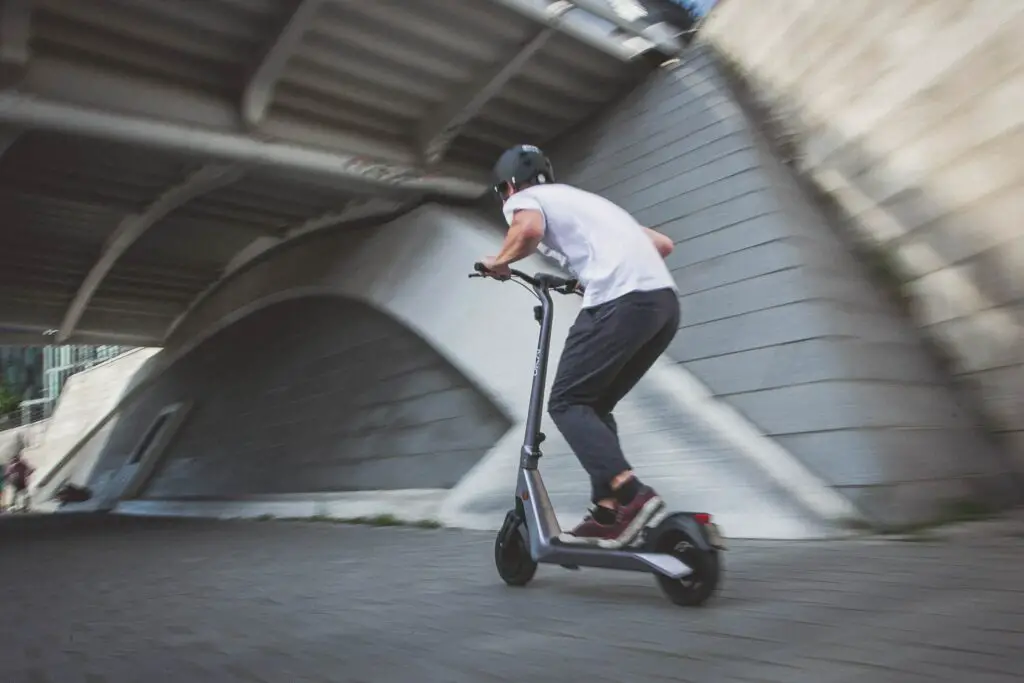
Speed is a crucial parameter of any scooter.
Average top speed of today’s e-scooters
Brands usually advertise the absolute top speed you can reach with their scooters. Still, their actual speed in the real world will often depend on many circumstances: battery level, rider weight, road conditions, weather conditions, and other stuff affecting the ride.
Depending on your budget, today you can find scooters that have a top speed of 20, 40, or even 70 mph or more! That may sound unbelievable, but it is very much possible with the fastest electric scooters out there.
Acceleration
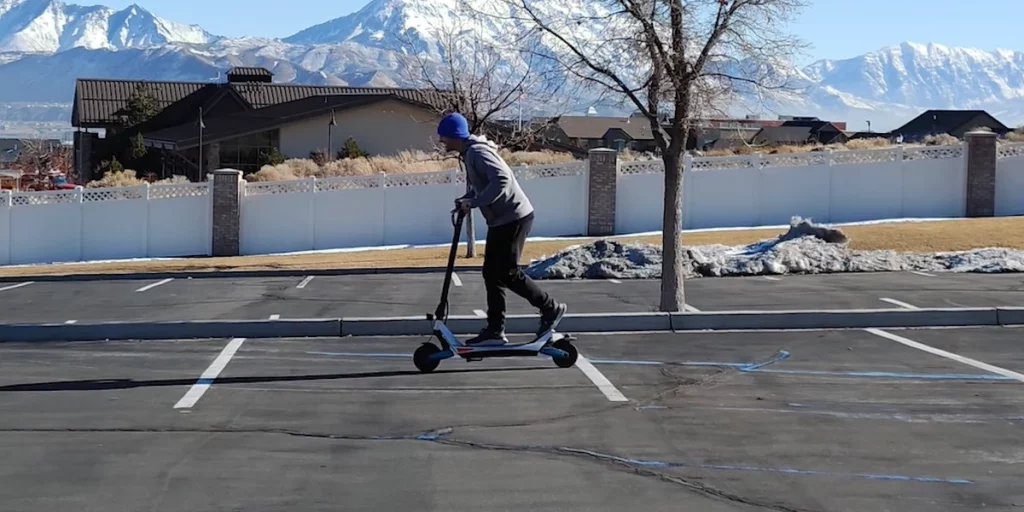
Besides speed, another important parameter that motors contribute to is acceleration.
Theoretically, power from electricity can be transferred from the battery to the motor in a much faster and more efficient way than in motors with internal combustion.
Contrary to cars, rapid acceleration isn’t a top priority for electric scooters, especially in crowded areas. The majority of scooters, even those without geared motors, prioritize a gradual start to ensure safety in busy environments with pedestrians.
With expensive racing scooters, this is not the case. The absolute top models on the market can reach 30 mph in less than 5 seconds.
But with most regular scooters under $1000, you can expect them to take up to 10 or 15 seconds before gaining a solid speed level.
Climb angle

This feature measures how steep of an incline can the scooter climb using only its motor power, with no additional help from the rider.
Climbing angles are measured either in degrees or percentages. Steep inclines and uphill streets sometimes have the angle of steepness displayed on a sign at the very bottom of the street, so you can always have a general idea of whether your scooter will be able to take you up that street or not.
Today, you can easily find a cheap scooter with a climb rate of above 10° / 17.6%, with many models going well above that.
Of course, there are a lot of amazing climbing scooters that can go for 35° or higher. But the regular urban commuter will be satisfied and taken care of with much less.
Battery
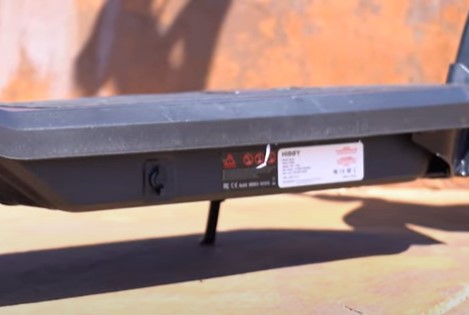
Electric scooter batteries are the second essential component in a scooter.
Since the most important function of the battery is electricity storage, you should always look for one with high capacity to get the maximum range out of your new scooter.
The battery’s capacity is measured in Watt-hours (Wh), which tells how much power (Watts) can the battery deliver over a period of time (an hour). While most scooters will have a battery capacity from 150Wh to 750Wh, the most expensive scooters out there have a lot more than that. The batteries of the longest-range electric scooters can even go above 3000Wh.
Charging time will depend on two things – the battery itself, and the charger.
Today, there are two main battery designs used in the e-scooter market: lithium-ion and sealed lead-acid. Other battery types, like nickel metal hydrides, could be seen more in the past but quickly went out of fashion because of their lower efficiency.
One of the newer developments in battery technology is the ability to remove them from the scooter. Today, scooters with removable batteries are one of the most sought-after models, since they enable the rider to lock the scooter outside and just take out the battery and charge it in their apartment or office without having to carry the entire scooter inside.
Range
Personally, range is the first thing I look at, as I believe it to be the single most important feature.
The range depends mostly on the battery capacity, which is why scooters with longer ranges will tend to have bigger batteries, and thus weigh more.
On the other hand, the range is negatively affected by the scooter’s weight and the weight it has to carry.
Controller
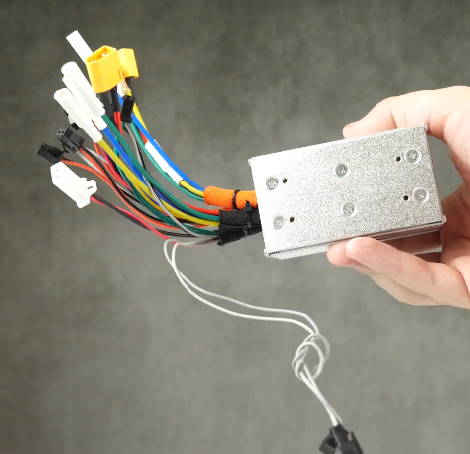
The controller is the main “connector” between the controls and the electric parts of the scooter like the motor and the battery.
This part’s main role is to signal the battery how much power it should output to the motor, practically regulating the speed of the ride. It has many additional roles, like regulating the top speed of the scooter, assisting in regenerative breaking, and some other functions.
The controller is placed inside the scooter’s body, usually right beside the battery. It looks like a small box with a dozen cables sticking out of it.
Folding mechanism
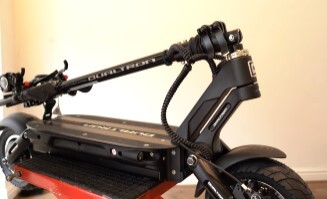
There are two main types of folding scooters: those with a folding stem bar and those where the entire front part, including the wheel, folds down.
The folding mechanism varies, and it can involve clasps, screws, levers, or buttons, but the principle remains the same.
Some scooters have folding handlebars for additional space-saving and protection during transport. Keep in mind that folding handlebars provide less stem stability.
Non-folding scooters are typically either inexpensive, toy-like models meant for children, or high-speed racing scooters prioritizing stability over folding features.
Weight limit
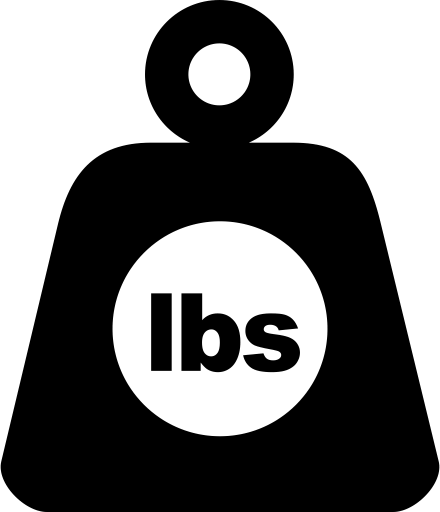
If you have a low weight and rarely exceed 150 lbs / 70 kg, you don’t ever have to worry about your scooter’s weight limit.
Even the cheapest and lightest electric scooters today can support a load of 220 lbs / 100 kg.
Many models go much higher than this, and some even have a weight limit of 330 lbs / 150 kg and above.
The best scooters for heavy adults aren’t always cheap, but if you need an e-scooter that supports a heavy rider, you have a few good options.
Comfort features
Not all features on electric scooters are for performance and power. Without enough comfort, your rides will feel like endless bumps, which is why the wheels, the tires, and the suspension all play an important role.
Wheels

Wheels are, naturally, key features of an e-scooter, but based on the scooter type and size, they can impact the ride comfort a lot.
Scooter wheels differ in size, including their diameter and width.
The wheel’s diameter ranges from 6 – 13 in / 15 – 33 cm, with most scooters typically having 8 or 11-inch wheels. 8 inches is the standard size for city streets or commuting scooters, while 11-inch wheels are more often used for fast scooters or off-road scooters.
The width of a scooter wheel is typically between 2 – 4 in / 5 – 10 cm. Models with a tire width of 4 inches or above are typically referred to as widewheel scooters.
Also, there are scooters with tire diameters of around 15 inches and tire widths of close to 10 inches, and these are called fat-tire scooters. They are in a category of their own since they usually have a built-in seat that’s not removable, and they resemble motorcycles quite a lot, but they are still considered electric scooters.
Tires

The second key feature that affects scooter riding comfort is the tires. Just like wheels, tires also vary in size and width, but also in tire type and material.
There are two types of tires used in electric scooters: air-filled or pneumatic, and airless or solid tires. See my guide on solid vs pneumatic tires to learn more about the differences between them.
Air-filled, or pneumatic, is the standard tire type used in every vehicle in the world. They can be tubed or tubeless, based on whether there is an inner tube beneath the outer tire or not.
The advantage of a pneumatic tire is better shock absorption and generally bigger speed, but they require more maintenance. Pneumatic tires have to be constantly inflated at the correct tire pressure, and you will often deal with flat tires and tire swaps.
Solid tires have one main advantage, and that is being puncture-proof. A solid rubber tire cannot go flat, as it doesn’t have air inside, and there is no maintenance required for that aspect.
The disadvantage is worse ride comfort and less control over your rides as you can’t fill the tire at your preferred air pressure. See my guide on the best solid-tire electric scooters for the best options in this category.
Suspension
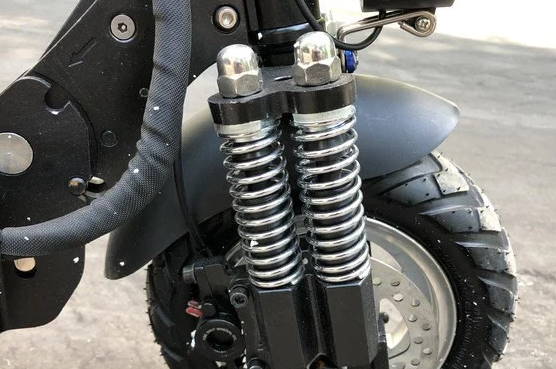
Suspension systems are still a sort of premium feature, rather than an essential one. Cheaper models rarely have any suspension at all, and those that do, generally have some lower-end type that isn’t that effective.
When looking for scooters with good suspension systems, it’s important to distinguish the three different types of suspension that are out there:
- hydraulic – the best one, but also the most expensive
- spring – the most frequent one, a solid system found on two-thirds of scooters with suspension
- rubber – the least effective one, only practical for small scooters
Seat
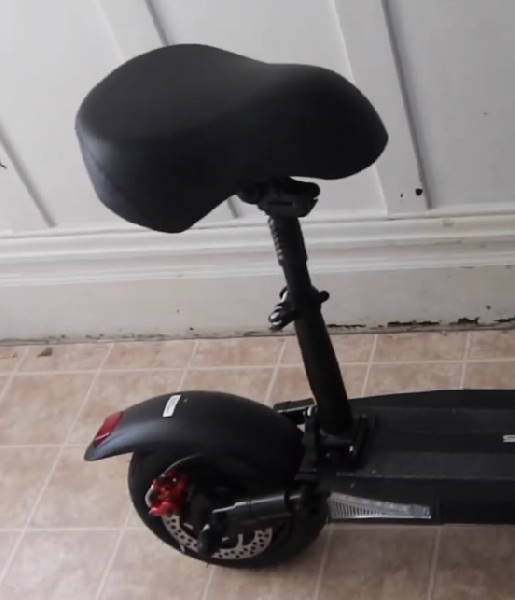
E-scooters are primarily designed as standing vehicles, with seats considered optional attachments.
Many riders prefer standing, finding it more practical and enjoyable. Some scooters have design elements that make sitting difficult, like unadjustable stems or narrow decks.
However, models supporting seats typically have them mounted on the rear deck in front of the back wheel.
Seats come in various materials, shapes, and features, including rubber, memory foam, leather, triangle or elongated shapes, with or without suspension. When purchasing an aftermarket seat, it’s advisable to shop at the same store where you bought the scooter for compatibility.
In general, I recommend thinking about this decision before you buy the scooter. It’s not that simple to install a seat on a scooter that hasn’t been designed to support one, so you’re much better off getting an electric scooter with a seat in the first place.
Safety features
Any feature that contributes to a safer ride, be it ride control, visibility, or general protection, is a safety feature.
Brakes
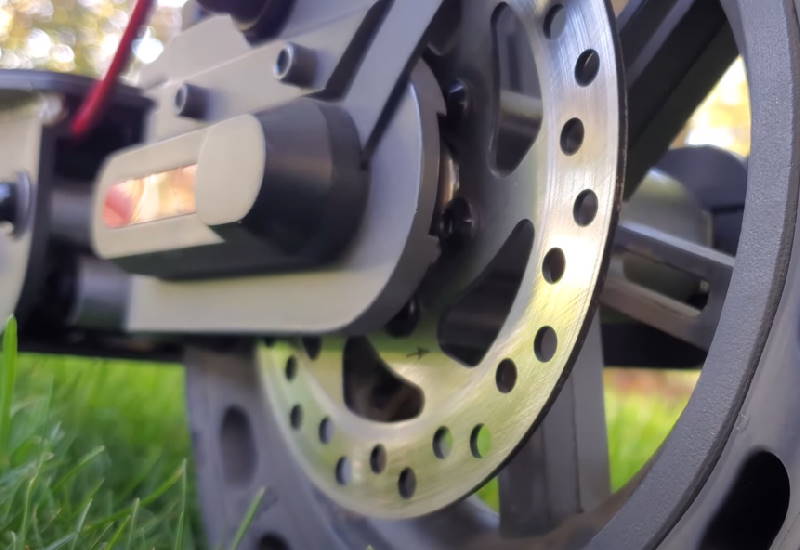
Every scooter, no matter its price range, has brakes in its build.
It’s important to regularly maintain the brakes, adjust them, and replace some parts if you notice they are worn off. Unreliable brakes are the major reason for scooter accidents, which should be a bigger concern if you are a high-speed rider.
Brakes are divided into two categories, based on the type of force they use.
Mechanical brakes include:
- disk brakes (a circular disk attached to the side of the wheel)
- drum brakes (two drumsticks attached to the top of the wheel)
- foot brakes (a pedal positioned above the rear wheel)
- hydraulic brakes (use a mechanism with liquid to provide the most efficient braking)
Electronic brakes, on the other hand, can be:
- standard (slows the motor down)
- with regenerative technology (slows the motor down and refills the battery using the stopping force)
See my complete guide on electric scooter brakes if you want to find out more about this key feature.
Lights
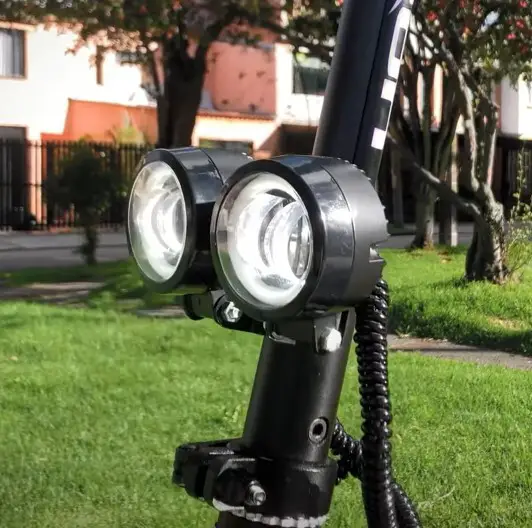
Lights are probably the most underrated safety feature on electric scooters. They have dual functions: they illuminate the road ahead of you and signal to those around you that a vehicle is moving toward them.
That’s why a scooter needs to have a sufficiently strong headlight and other forms of signals. Some models also include a rear light, a brake light, turn signals, and many different side reflectors attached to the sides of the deck and the stem.
Side reflectors can also include flashing LED designs, which are sometimes seen on the more expensive scooters. Some brands, especially ones that manufacture high-end scooters, are known for illuminating their logos in RGB LED lights.
Check out my guides on electric scooter lights and riding your scooter at night for more information.
Keys and locks

Let’s get this out of the way first – built-in locks on electric scooters are not very effective.
The best and most effective way to protect your scooter from thieves is to buy a strong scooter lock and use it to tie the scooter onto a bike rack.
Some scooters with a built-in chain lock, which is a nice way to add a little bit of extra security, while others use ignition keys to start the motor.
Other types of locks include digital pins or passwords, screen locks, and app locks, but the bottom line is that none of these are as reliable as a good ol’ thick chain and a strong lock.
Convenience features
While some features, like the motor of the wheels, simply have to be present on a scooter, other features are mostly there for a more convenient experience.
Portability
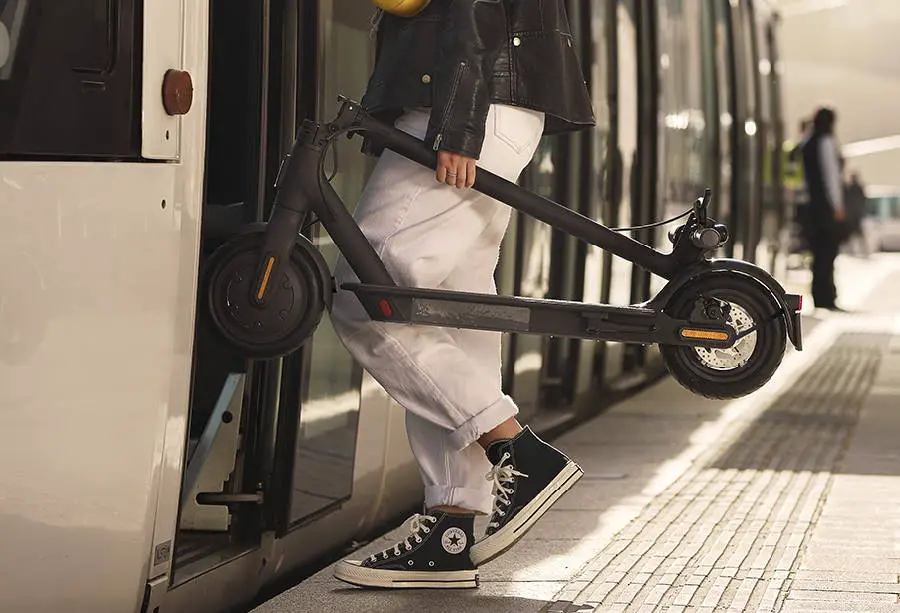
Portability is a rather vague term that signals how easy it is to carry the scooter around when you can’t ride it using the motor. This can happen surprisingly often: when the battery runs out, when you have to take your scooter up some stairs, when you hop on public transport, etc…
Two things mainly contribute to a scooter’s portability: its weight, and its dimensions, or rather its size (folded size matters more, since portability matters more when the scooter is folded).
We at EScooterNerds have come up with a way to put e precise number on how portable a scooter is. We call that number a “portability index”, which can have a max value of 100, and is calculated by taking into account the scooter’s weight, in kilograms, and its folded dimensions, in centimeters.
The most portable scooters in the world, those that you can walk around with, have a portability index of above 85. What makes them special is they are both very light (15-20 kg) and have small folded dimensions (usually a folded width of no more than 12 in / 30 cm).
Stem
The stem is like the neck of the scooter. It’s a long straight bar that connects the bottom part (the deck) with the “head” (the steering wheel).
Stems are always made of hard metals, like steel or aluminum, as they need to be firm and stable, without any wobbly parts. They also need to hold the steering wheel so it doesn’t swerve around like crazy.
Another important aspect of the stem is that it keeps all the wires of the scooter in it. To be precise, these are the wires from the controls and the screen, without which you won’t be able to ride the scooter.
While this part is usually put in place and is non-adjustable, there are some models that allow you to customize the height of the stem. Shorter riders will need a shorter stem, as the steering wheel must always be in line with your chest. If it’s too high, you won’t be able to use the throttle and the brakes properly, but if it’s too low, then you’ll have to bend over too much and hurt your back.
Screen
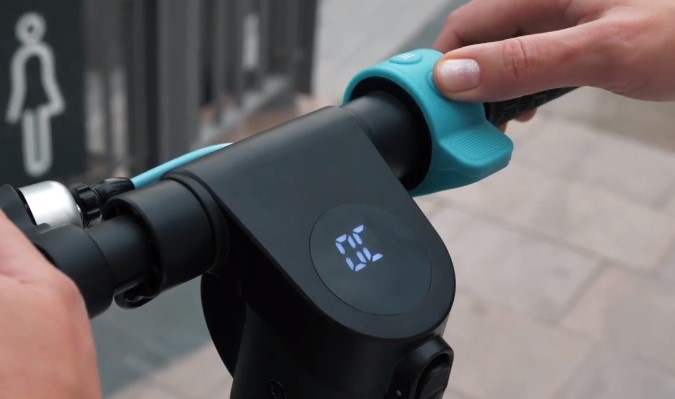
The screen is always located on the steering wheel, typically in between the handlebars. Most models today use LCD screens which shows the most important metrics: speed, battery level, riding mode/gear, and other features that can be turned on or off, like cruise mode, headlight, Bluetooth connection, etc.
There are mainly two types of e-scooter screens: flat LCD screens integrated into the steering wheel, or small screens hanging on top of the handlebar.
They also differ in position and size, but none of these aspects have too big of an effect. The most important specs – battery and speed, are always the most visible ones, and typically the only thing riders need to know during the ride.
Waterproofing/IP rating

Like any other electric item, e-scooters can suffer a lot from water intake if their build isn’t properly protected. Unfortunately, not all e-scooters have a solid ingress protection (IP) rating, which showcases how much the scooter is protected from water and dust intake.
Electric scooters are made of hard materials, like aluminum, other metals, carbon fiber, or plastic, which are generally waterproof or water-resistant. But the battery and the motor often need much bigger protection than the base material, and that usually includes outer waterproof coating with a sufficient IP rating.
On average, a scooter will typically need a rating of at least IP55 to have strong protection from both dust and water intake. The first number after the “IP” letters denotes protection from dust and particles, while the second denotes protection from water and other liquids. If there is a letter “X” in place of a number, it means there is no sufficient info about protection from that particular danger. (For example, an IPX5 means the scooter has no known protection from dust intake, but it does have protection from light water sprays).
Riding a non-waterproof scooter out in heavy rain might result in damage to its electric parts, and even likely a faulty battery afterward. This also means you can’t wash it down with water, unless you only use a wet cloth very carefully.
You can check out my guide on how to waterproof your electric scooter if you’re concerned that it doesn’t come with enough water protection, or just see my guide on the best waterproof electric scooters if you want to never worry about rain or snow.
Controls

There are four standard controls found in all e-scooters:
- throttle – to engage and speed up the motor
- brake lever/s – to engage the front and/or rear brake (scooters typically have a separate lever for each brake, but not necessarily)
- display – the main screen in the middle of the cockpit
- power button – powers the scooter on and off, and is typically placed on or beside the screen
Additionally, there are a few controls that are only found in some models, including:
- horn/bell – typically a ring bell, or a button that sounds up the horn of the scooter
- lights switch – one or multiple switch buttons that turn the lights and signals of the scooter on or off
- mode switch – controls the riding mode, or switches between gears, if the scooter has any
- menu navigators – some screens come with advanced menus and multiple buttons used to navigate through it
Handlebars
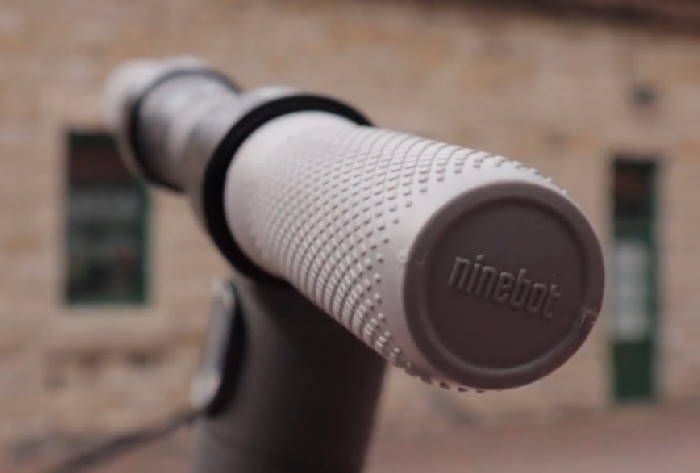
A steering wheel is the whole top part that is placed on top of the stem, and it includes the handles, the controls, and the screen. A handlebar, on the other hand, is the outer part of the steering wheel on which you put your hands.
Like the stem itself, handlebars are often fixed and non-adjustable, but you can also find some scooters where you can both adjust and fold the handles.
Foldable handlebars are a great feature for storing. They significantly shrink the width of the scooter, making it much easier to store it in the trunk of your car. They do reduce the stability while riding, however.
The other thing you should look out for is the grips. All handlebars have grips, but some have better than others. Some models have generic smooth handle covers, while others devote more attention to them. This will ultimately be a thing of personal preference, as some people prefer smoother handles, and others like them threaded.
Fender
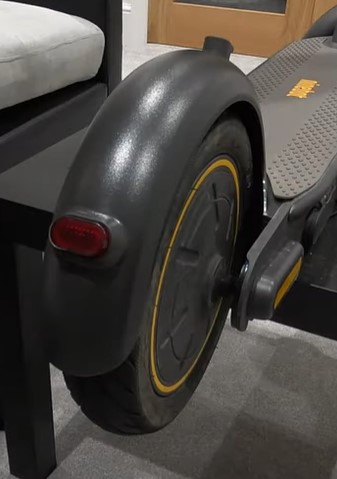
The fender is a small and often underrated convenience feature. Many brands omit to put one on their scooters, or use lower-quality fenders that don’t function properly or break easily, which turns into a huge inconvenience for both the rider and the scooter, especially if the rider lives in an environment with poor roads or bad weather.
Lack of a fender on either wheel will not only result in rain and mud droplets on your pants and jacket, but it can also damage the scooter’s electric parts if they aren’t waterproofed.
The position, length, andangle of the fender are also important. If the fender is short or it’s placed slightly off, it will still let a lot of water through.
Luckily, this feature is easily adjustable and swappable, so you can switch the fender up yourself if it isn’t doing its job efficiently.
Rearview mirror

Rearview mirrors are, surprisingly, very rare on e-scooters. Now, this might sound a bit too subjective, but in my personal experience, a mirror is one of the most useful features for city rides.
Riding on bike lanes is not always possible, as many areas lack proper scooter infrastructure, and you are often forced to ride on the street. In this scenario, not having any idea what’s behind you can sound quite inconvenient.
I wouldn’t go so far as to say this is a must-have feature. Many riders simply won’t feel the need for it. But if you are anything like me, you can always add a rearview mirror on the scooter yourself, as the steering wheel will most likely support it.
Extra features, accessories, customizations, upgrades
You probably won’t see these features built into an electric scooter, but for people who like to have a few extra upgrades in their scooter, or simply want to make their scooter look cooler, there is a wealth of additional options, customizations, upgrades, and accessories.
Basket
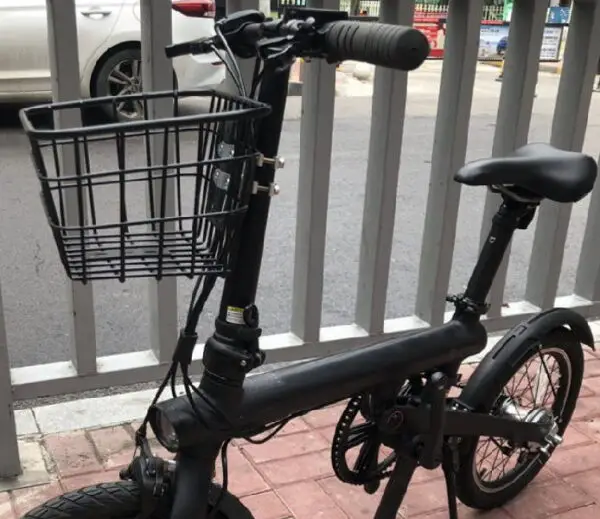
One of the options you have is to put a basket on the front of the scooter, hanging on top of the stem.
The downside here is that the center of gravity on a scooter is much more upfront than it is on bikes, so adding a big feature like a basket upfront can make keeping the balance a bit harder. I wouldn’t recommend this feature for scooters with single front-wheel drives or those that have the battery stored in the stem.
Trunk
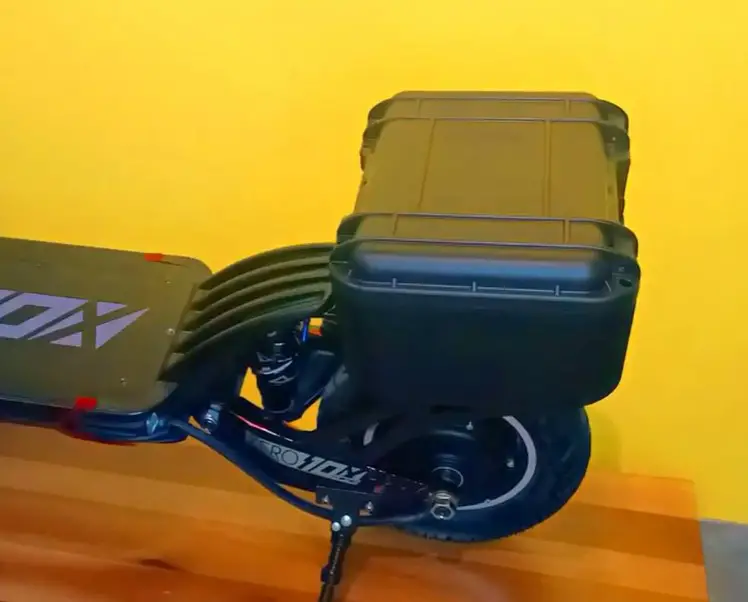
A trunk will give you much more storage space than a basket, but unfortunately, very few scooters support trunks or baskets.
A big trunk will have to be put in the rear, on top of the wheel, while the scooter itself would have to have a rather wide deck with a big weight limit. Seated scooters are a much better fit for a trunk than standing ones.
Other accessories, customizations, upgrades
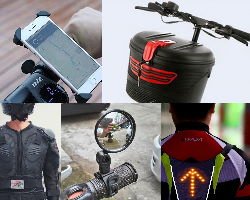
Besides the trunk or the basket, there are a ton of other electric scooter accessories and customizations that you can add to your scooter that will make it more useful.
Some of my favorite accessories include:
- additional lights
- scooter alarm
- hook for bags or other items
- carry handle or carry strap
- phone holder
- wall mount
See my detailed guide on all the possible electric scooter accessories to get some inspiration for cool new features you can add to your scooter for very little money.
Apps
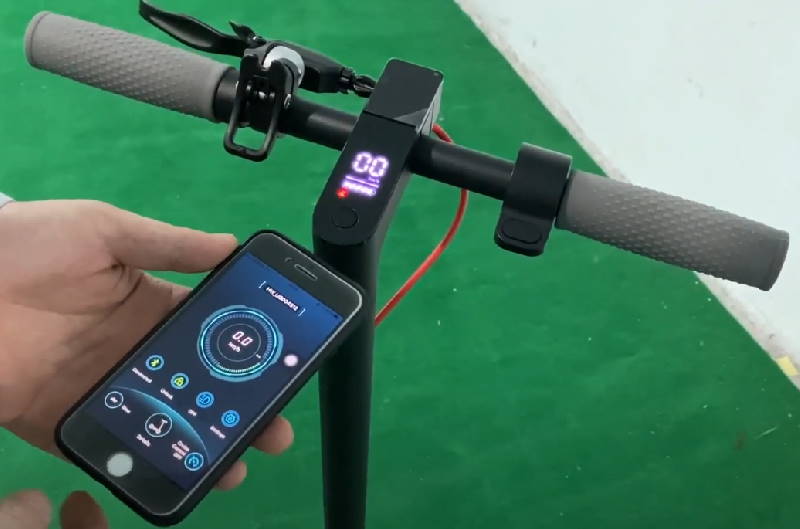
Apps are typically made as an extension to the scooter’s display, showcasing more detailed info than what’s present on the main screen.
In general, scooters connect with their appropriate apps via Bluetooth.
Of course, not all models support Bluetooth, or any other type of connection, which is the main reason why not all scooter brands have their mobile app.
You can always use our universal EScooterNerds app, available for both iOS and Android, even if your scooter already has a specific app for it.
